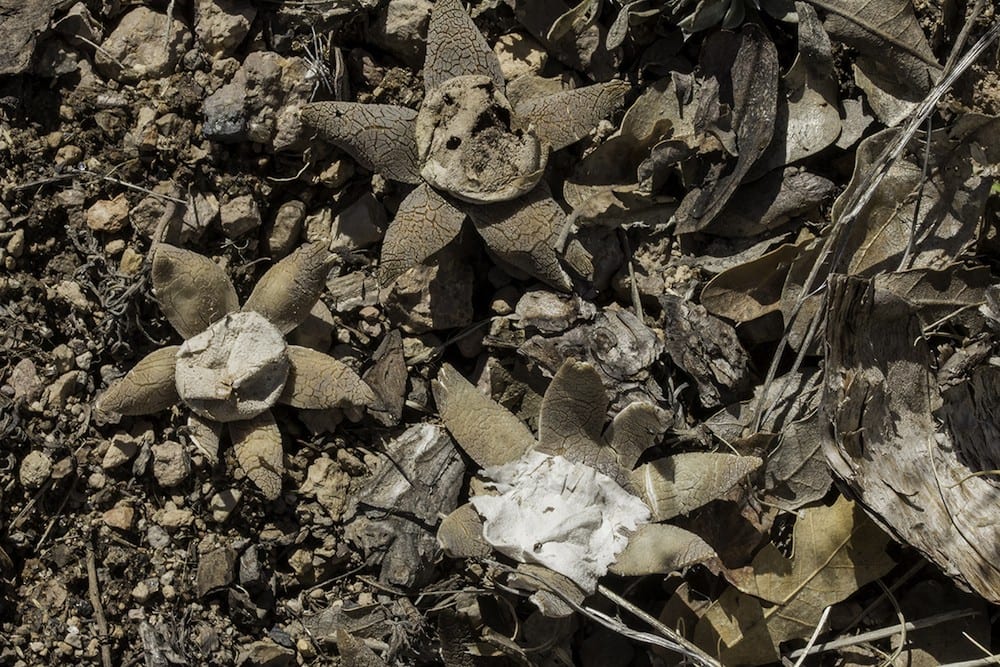On walks in the piñon-juniper woodlands around town, it’s not unusual to come across little clusters of stars scattered on the orange soil. These aren’t collections of fallen objects from space, they are earthstars.
I usually come across earthstars among dried oak leaves or under junipers or piñons. It’s not their drab brown or gray color that attracts my attention, it’s their shape and texture. Spreading from a central disk, earthstars have five or six or maybe a dozen fleshy rays arranged in a star shape. The rays are thick, almost leathery. The surface is cracked with a pattern much like mud dried under the New Mexico summer sun.
I probably found a hundred earthstars before I tried to figure out how they are formed. They don’t offer many clues as to their origin—are they mineral, vegetable, or animal?
Earthstars are the leftovers of fungi in the genera Astraeus and Geastrum. They are small, modified puffballs with an attractive twist.
These fungi begin life as brown blobs growing underground. In summer or fall, after a decent amount of rain, they are ready to reproduce. The spore case is much like the familiar puffball, but as it first develops it is encased in a thick outer skin. When the spores are mature, the outer skin splits open along four or five seams. The split sections of the skin—the rays of the stars—lie flat on the ground or bend backward to reveal the spore case.
Like a typical puffball, the spore case is a sphere packed with tiny spores inside. There’s a hole at the top of the sphere and the spores spew out the opening when something—a critter foot, the finger of a curious human, or even a raindrop—impacts the sphere. The spores are released and carried off in the breeze.
Some earthstar species are hygroscopic: the rays open during wet weather and close as it dries out. A West Coast species has rays that bend down so far that they raise the spore case several inches above ground, forming incredible shapes that give it the nickname Acrobatic Earthstar (search online for Geastrum fornicatum for some great photos). In his classic treatise Mushrooms Demystified, David Arora says, “Mature individuals defy description, but look something like a cross between a flat tire and a ballet dancer.” That’s an interesting image, isn’t it?
It’s common to find earthstars that have split open, but the spore cases are withered and gone. It’s special to find a star with the puffball part intact. At least one of our earthstar species matures in fall and early winter, so now is a great time to watch for them.
Are they edible? They won’t kill you, but they are tough textured and not very tasty, or so I’m told.

Composition and photography by Craig Martin

